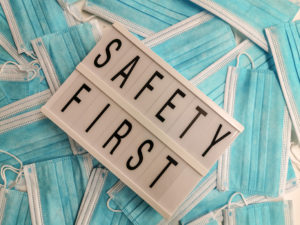Share:
Wellness: Tiny steps can yield big results

As most of us are aware, professional burnout has become such a serious problem in health care that it’s often called an epidemic. Burnout is characterized by emotional exhaustion, professional detachment (often called depersonalization) and a sense of futility about your accomplishments.
Although organizations, including Asante, are working to minimize some of the job stressors that lead to burnout, there are some simple techniques we can practice on our own that have proven to be effective.
Take some breaths
It may be tempting to dismiss the simple act of inhaling and exhaling as an unproven therapy, but in fact breathing is one of many evidence-based micropractices that can have very real benefits in reducing some of the stress that can lead to burnout.
Preliminary studies have found that diaphragmatic breathing — inhaling deeply while pushing the lungs downward then slowly exhaling — can significantly lower stress as measured by physiologic biomarkers such as blood pressure and self-reported stress levels.1
This technique is called a micropractice because it takes only seconds and can be done virtually anywhere — between cases, during bathroom breaks, after charting and before a meal.
Take a pause
Also called “mindfulness,” a pause to reflect dispassionately on your thoughts and feelings at the moment has been shown to reduce anxiety and burnout symptoms in clinicians. It also helps you learn to regulate emotions and build resilience.
Pausing while performing hand hygiene or logging into Epic, for example, are ways to work the practice into your daily routine. Focus on your breath, center your mind and body, and visualize the calm and presence you will bring to the next patient.
Name that emotion
If you’re upset, stop to identify the underlying emotion. Is it anger? Fear? Exhaustion? This “name it to tame it” micropractice came out of physician workshops, and it is surprisingly effective. The simple act of naming a challenging emotion has been shown in fMRIs to shift brain activity from the threat-sensitive amygdala to the moderating prefrontal cortex.2 In short, naming the emotion helps regulate its power. If you’re stuck, here’s a helpful “feelings inventory.”
Express thanks
Gratitude exercises are gaining popularity because they help build resilience, a key factor in preventing burnout. In one pilot study,3 health care workers were asked to write down three things they were thankful for over 15 days. At the end of the “Three Good Things” pilot, participants showed a decline in emotional exhaustion and depression symptoms and a general improvement in happiness. Like the other micropractices, acknowledging what we’re grateful for can be done anywhere at any time. You can keep a gratitude journal or offer kudos during team huddles. The latter is especially effective because it allows others to share your gratitude or learn from it.
Of course, these micropractices are not a cure for burnout, but rather one tool among many to help prevent it. To find resources and services to help you enhance your well-being during these challenging times, please visit the Asante Wellness Program page on myAsanteNET.
References
- Fessell D, Cherniss C. Coronavirus disease 2019 (COVID-19) and beyond: micropractices for burnout prevention and emotional wellness. J Am Coll Radiol. 2020;17(6):746-748.
- Lieberman MD, Eisenberger NI, Crockett MJ, Tom SM, Pfeifer JH, Way BM. Putting feelings into words. Psychol Sci. 2007;18(5):421-428.
- Sexton JB, Adair KC. Forty-five good things: a prospective pilot study of the Three Good Things well-being intervention in the USA for healthcare worker emotional exhaustion, depression, work–life balance and happiness. BMJ Open. 2019;9(3):e022695.
If you have a question, please contact the author or relevant department directly.



